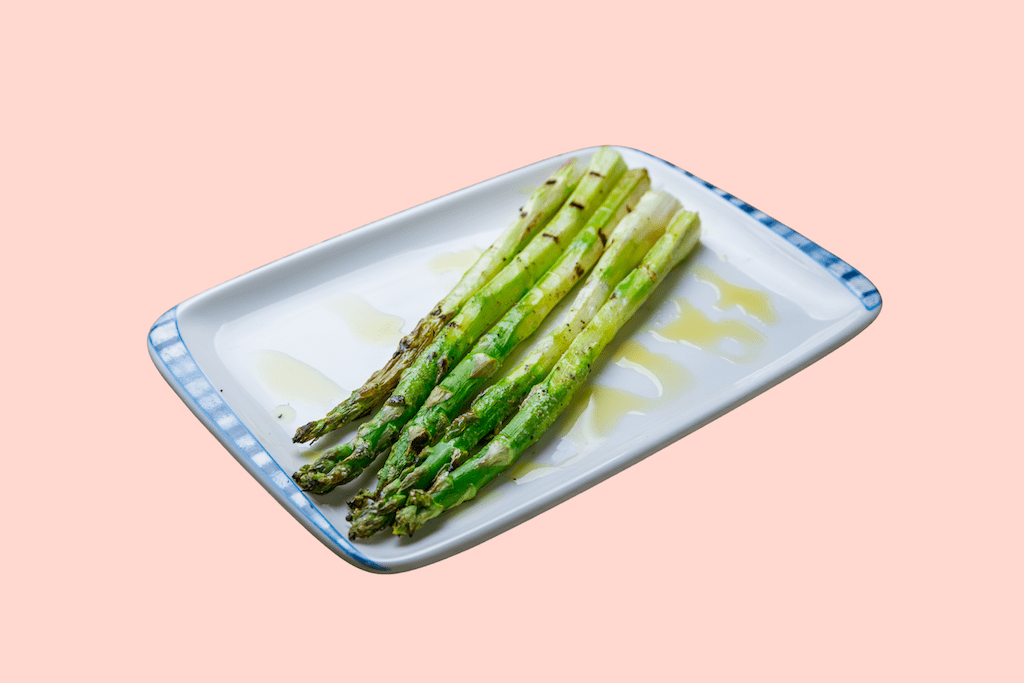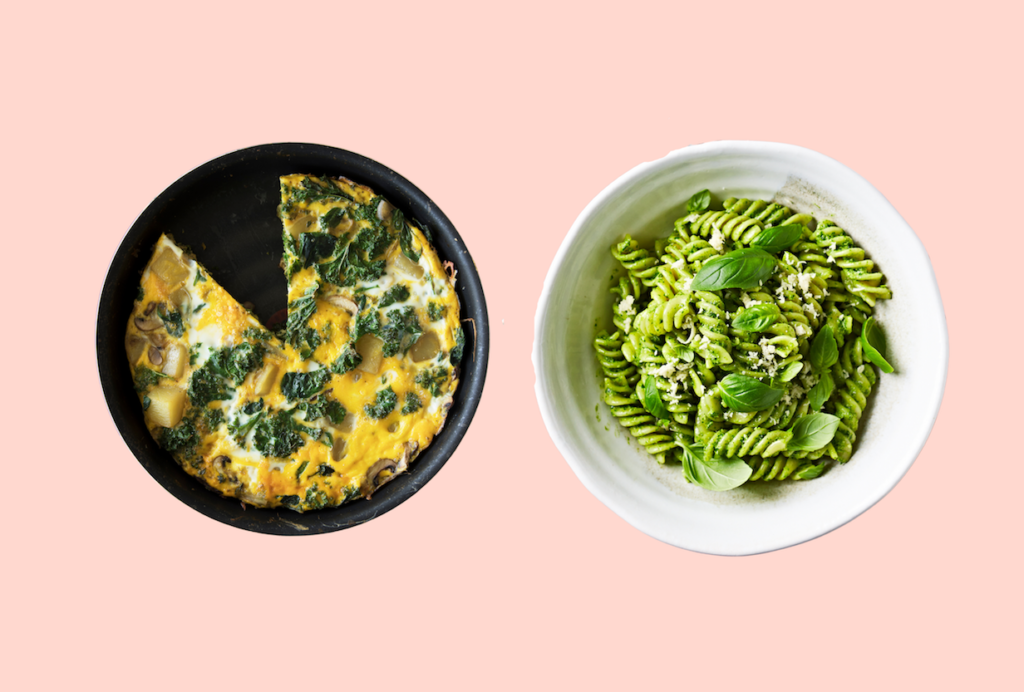News (relatively speaking) just in; if you thought you should be eating five portions of fruit and veg a day, then it might be time to think again; according to studies conducted in 2017 by Imperial College London, we should actually be aiming for twice that amount. They found that eating ten portions a day, when compared to a diet of no fruit and veg, cut your risk of premature death by 31%. Wow!
That said, it should be noted that the study also concluded that ‘’even small amounts had a health boon, but even more is better’’. Broccoli pasta, red pepper hummus, mango smoothies? You don’t have to tell us twice!
While the jury’s still out on the exact number you should be enjoying, one thing is for certain: the more fruit and veg in your diet, the better. So let’s just aim for that, then?
Today we’re placing a particular focus on green veg. In a report by Healthline regarding the healthiest vegetables on the planet, the majority were green, with spinach coming out on top. While scientists recommend a variety of colours on the plate for maximum health benefits, if you’re looking to get more green stuff in your diet, then you’ve come to the right place. Here are 5 IDEAL ways to do just that.
LEARN HOW TO MAKE THEM DELICIOUS
Overcooked, limp, lifeless veg – there’s nothing more likely to put you off eating your greens. On the flip side, one of the best ways to up the green ante is to learn how to cook the vegetable in question properly, and with the care and respect it deserves. Plunging them into a large pot of heavily salted boiling water just won’t do.
Each vegetable responds differently to heat, with asparagus loving the bar marks of the barbeque whilst spinach (particularly the frozen stuff) seems happiest taking a leisurely soak in a stew or curry to rehydrate.
Generally speaking, most green vegetables benefit from first being blanched in salted boiling water for a short time before being refreshed in icy cold water to stop them overcooking. Then, you can finish your vegetable of choice in a way appropriate to the dish you’re cooking; that grill for asparagus, finely chopped broccoli for pasta, or finished in a hot pan with bacon if you’re serving sprouts.
Be precise and specific and you’ll learn to love green veg! What’s more, by not overcooking them into a sludge, you’ll not be wasting valuable nutrients. According to public health nutritionist Charlotte Morrison, ‘’water-soluble nutrients, like vitamin C, B vitamins or folate, can leach out of veggies when cooked in water…if you’re over-boiling them, then you will lose some of the nutrients.”

NOT JUST A SIDEKICK
Just as it pays to consider the precise way to cook your green vegetable to their best, so it’s also a good idea to consider how best the ingredient in question works as part of (or the basis for) a meal. A perfunctory side of green peas with no rhyme nor reason for its inclusion is usually one left, well, on the side. But on the other hand, a green vegetable deployed to perfectly match a protein or be the star of their very own show is going to keep you coming back for more.
Remember, salads aren’t just for summer. In fact, salads can make use of whatever green vegetable is currently in season to brilliant results. Check out this cracking round up of green salad recipes for inspiration and broaden your range accordingly!
Don’t stop there. A frittata or omelette is a wonderful way to boost your green veg count; simply load it up with peas, broad beans, spinach, before mixing with eggs and finishing under the grill.
The list goes on; some of the finest, most traditional Italian pasta sauce recipes are little more than a dark green vegetable, garlic and chilli…and a whole lot of alchemy.
The possibilities are endless and we wish we could list them all here, but we’re getting hungry! What we’re trying to say is; place your green vegetable front row and centre of the dish, and you won’t be disappointed.

GROW YOUR OWN
If you need a little extra motivation to eat your greens, then growing your own produce is just the way to nurture and incentivise your diet. Satisfying, surprisingly easy to do and bringing the freshest flavours you could possibly hope for…what’s not to love?
Growing your own also means you’ll be more in tune with the seasons, meaning you’ll be eating veg at it’s very best, and cultivating a connection with nature so many in the modern world lack.
And because all you need to get things started is a few seeds and some inexpensive equipment, growing your own can be much cheaper than buying fruit and vegetables from the supermarket. Fortunately, much of the green stuff tends to be some of the hardiest, and thrives in Britain’s sometimes inhospitable conditions. If you’re keen to learn more about growing your own at home, then check out our IDEAL beginner’s guide on growing your own produce.
GREEN SMOOTHIES & JUICES
Delicious and nutritious, smoothies and juices can be a wonderful way to kickstart your day, especially on those Monday mornings when we’re all feeling a little more sluggish than usual. Here at IDEAL, we like them for an elevenses treat every now again or equally, for an afternoon pick me up to give the day some colour.
You don’t have to splash out on the fresh stuff every time you want a smoothie. Simply stash a mix of vegetables and fruit in freezer bags and throw them into the blender with a little apple juice for an instantly chilled smoothie.
Most supermarkets sell frozen smoothie packs. We’re particularly fond of Waitrose LoveLife Green Smoothie Mix, which is a blend of spinach, mango, kiwi and kale. Also excellent is Asda’s Gorgeous Green smoothies, a mix of cucumber, apples, spinach and bananas. So delicious and so healthy, too.
Drinking green juice is another way to up your green intake and boost your consumption of a number of nutrients. However, it should be noted that, as Healthline point out, “Green juice doesn’t offer any benefits beyond those associated with fresh produce. However, if it helps you get more nutrients in your diet, it’s safe and healthy in moderation”.
Indeed, like all good things, it’s important to drink smoothies and juice in moderation. According to new national recommendations, smoothies count as no more than one of your 5-a-day – even if you’ve put 5 different types of fruit and veg in them. Moreover, smoothies and juices tend to be high in sugar; the Eatwell Guide say that a serving of 150 ml has the same amount of sugar as a mini can of cola.
Some choose to supplement their daily vegetable with green powders to make green juice, too. However, as VeryFit point out, “it is important to note that research on green powder is limited and generally conducted by individual companies to back their label claims. That said, greens powder may contain the same health-promoting properties as fresh fruits and vegetables, such as antioxidants, vitamins, and polyphenols”.
As such, green juice should never be used as a replacement for for fresh vegetables, but rather as a supplement to them.
INFORMED, INTUITIVE EATING
Knowledge is power. When you know how, when and why to put good stuff in your body, you can more easily identify what exactly are the healthiest choices. Did you know, for instance, that kale is packed with protein? Or, that the cruciferous family, which includes the aforementioned kale alongside broccoli and brussel sprouts, may help to reduce your risk of developing cancer?
What’s more, were you aware that it’s been reported how dark leafy greens can fight acne? Arm yourself with knowledge about how to cook green vegetables and their many benefits, and you’ll be keener than ever to include them in your diet!





